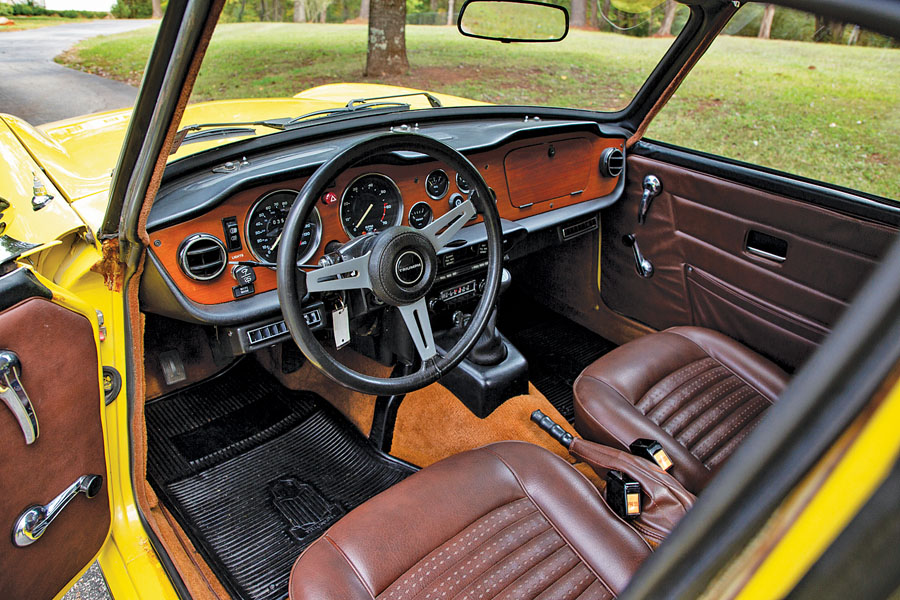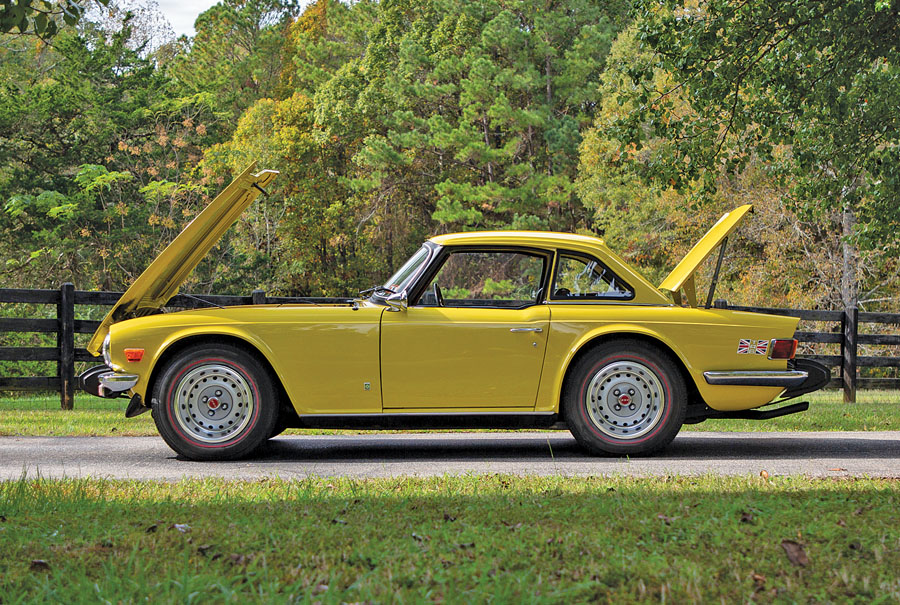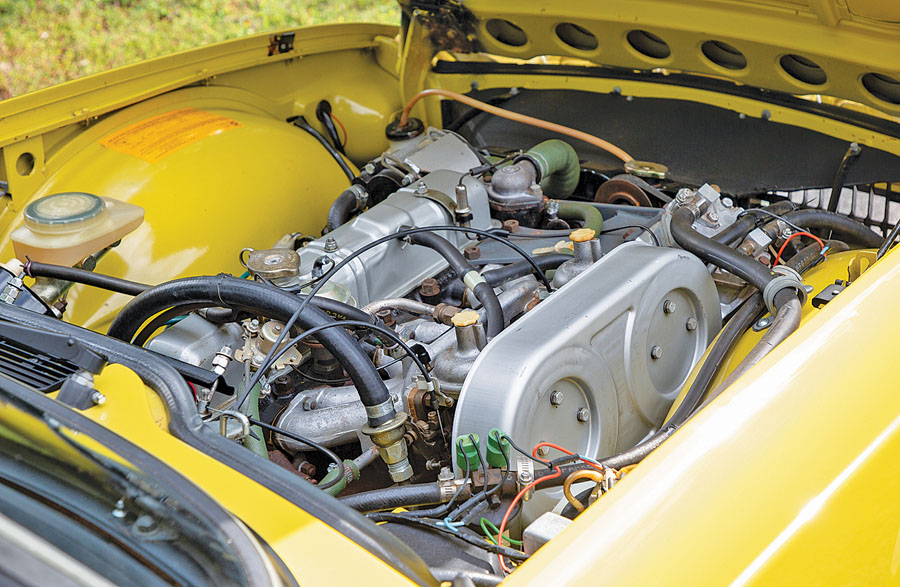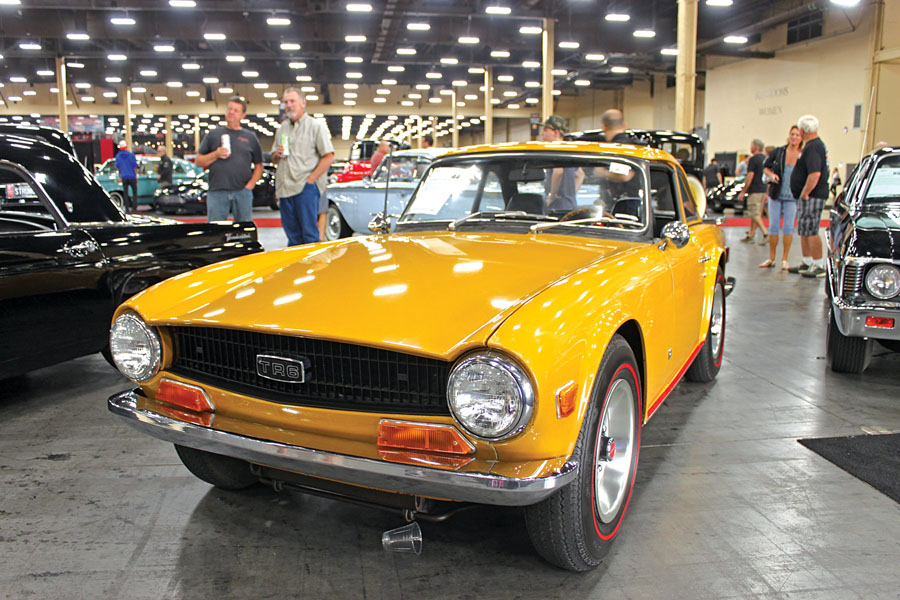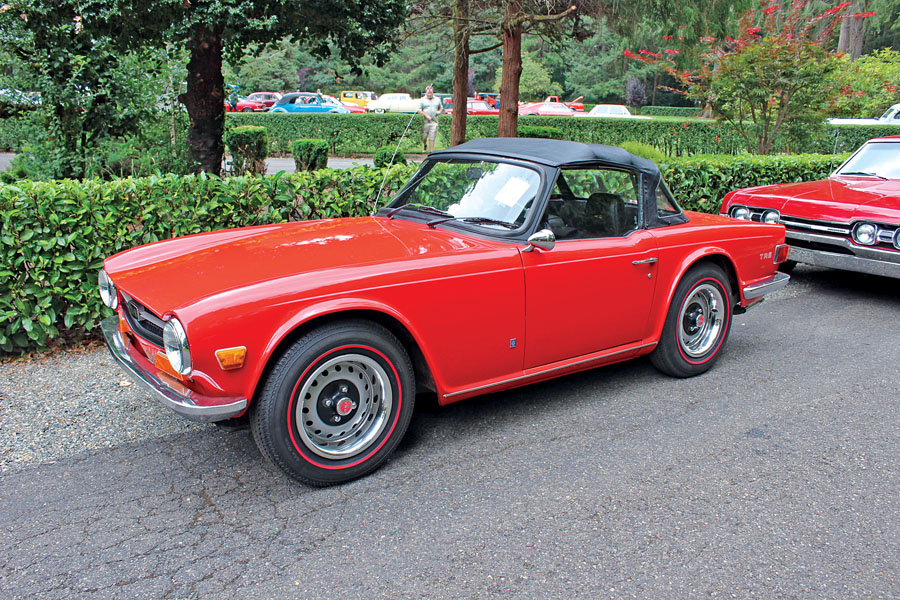
No window of opportunity stays open forever, but in the case of the Triumph TR6, it has been open a long time.
Long thought to be undervalued amaong those who expected it would follow the Big Healey’s valuation path upwards over the past decade and a half, TR6 prices haven’t moved nearly as much. The happy result for the non-investor is a terrific British sports car that’s still available in decent driver condition for summer-job money.
But our purpose here is not to analyze the market for this car. Rather, it is to celebrate the affordable opportunity that it represents, and that the window is still open. For about half the money of the least-costly Big Healey, you get the full vintage British sports-car experience with this last-of-an-era body-on-frame British roadster.
Chunky — but nearly 92,000 sold
Following the TR4 and the transitional model that followed it, the TR250/TR5, the TR6 emerged as a face- and derriere-lifted version of the TR4 while retaining the TR250’s 6-banger. In other words, the transition of body and soul from the earlier TR3 model was compalete in the TR6 and Triumph’s new flagship got a cleaned-up body design and more power. It’s little wonder that they sold more than 91,000 of them over the nearly eight-year production run.
Yes, the TR6’s looks are somewhat uninspiring, and its chunkiness seldom evokes a swoon. Park it next to a TR3 and you wonder if they had forgotten how to stamp a compound curve. On the other hand, its square-jawed, sanding-block persona made for a purposeful, imposing presence. Think of it as being from the Bauhaus school of auto design, with lots of cubes and right angles — a perfect blend of art and craft.
Did someone say “Form follows function”?
“Sabrinas” and so much more
Unfortunately, the TR6 came and went at the precise time that American auto regulations were proliferating. It was born soon after the first safety and emissions regulations came into effect in 1968, and the Triumph engineers obviously struggled to adjust to the more and better (that’s “better” in air quotes) car-design ideas of bureaucrats.
One of those “better” ideas was to make cars able to withstand front and rear bumps without damage. As a result, over time the TR6 grew a pair of impact-absorbing bumper protrusions on both the front and rear. Those large protrusions on the late-1974 and subsequent TR6 bumpers, nicknamed “Sabrinas” after an English actress of similar specification, serve the unintended purpose of making the earlier TR6s look cleaner and more classic, and as with many classic cars, the earlier examples often command higher prices.
Bang for the buck
The car has a little more than 100 horsepower, but it feels like much more, as it weighs only 2,400 pounds before you add passengers. The 2.5-liter straight 6 makes all the right sounds and produces enough torque to back it up.
Add reasonable weather protection and an impressive list of specs — fully independent suspension, rack-and-pinion steering, full instrumentation set in a walnut-veneer fascia, leather-wrapped steering wheel and shift knob, adjustable bucket seats — and it gets hard to find a downside.
When you go shopping, don’t forget the extras. Some TR6s were equipped with overdrive, and it’s a great bonus. Don’t think of it as a showstopper if you find a great example at the right price without it. The TR6 is geared high enough for freeway travel without it, but it’s a clear tiebreaker between two cars of otherwise equal merits. There was also an attractive steel hard top available. Again, it’s a nice-but-not-essential extra — and a worthy tiebreaker.
Rust and repairs
Oh, sure, the TR6 is subject to rust, and as it’s a vintage British car, you can’t expect Swiss-watch reliability that has gone through meticulous service, but you know all of that going in. You’re going to inspect carefully for rust and suspension-mount stress cracks — better yet, get a marque specialist shop to do that for you. You’ll also check all of the usual caveats on a test drive — and then budget for 10% (feeling lucky?) to 25% over and above the sale price as a reserve for some unforeseen contingency repairs. Let’s be realistic here.
By the way, if you do plan to join the ranks of TR6 owners, the Triumph culture advises that you grasp the importance of Redline tires, reflectorized convertible tops and green hoses. Consult your local Triumph Club chapter or any of the better Triumph parts suppliers, and they can fill you in.
We don’t want you embarrassing yourself the first time you show up at Cars & Coffee in your new vintage ride.
If you’re hankering for a classic British roadster, the TR6 might be your best chance to buy low while they’re still selling low. No window of opportunity stays open forever. ♦
 No window of opportunity stays open forever, but in the case of the Triumph TR6, it has been open a long time.
Long thought to be undervalued amaong those who expected it would follow the Big Healey’s valuation path upwards over the past decade and a half, TR6 prices haven’t moved nearly as much. The happy result for the non-investor is a terrific British sports car that’s still available in decent driver condition for summer-job money.
But our purpose here is not to analyze the market for this car. Rather, it is to celebrate the affordable opportunity that it represents, and that the window is still open. For about half the money of the least-costly Big Healey, you get the full vintage British sports-car experience with this last-of-an-era body-on-frame British roadster.
No window of opportunity stays open forever, but in the case of the Triumph TR6, it has been open a long time.
Long thought to be undervalued amaong those who expected it would follow the Big Healey’s valuation path upwards over the past decade and a half, TR6 prices haven’t moved nearly as much. The happy result for the non-investor is a terrific British sports car that’s still available in decent driver condition for summer-job money.
But our purpose here is not to analyze the market for this car. Rather, it is to celebrate the affordable opportunity that it represents, and that the window is still open. For about half the money of the least-costly Big Healey, you get the full vintage British sports-car experience with this last-of-an-era body-on-frame British roadster.
 No window of opportunity stays open forever, but in the case of the Triumph TR6, it has been open a long time.
Long thought to be undervalued amaong those who expected it would follow the Big Healey’s valuation path upwards over the past decade and a half, TR6 prices haven’t moved nearly as much. The happy result for the non-investor is a terrific British sports car that’s still available in decent driver condition for summer-job money.
But our purpose here is not to analyze the market for this car. Rather, it is to celebrate the affordable opportunity that it represents, and that the window is still open. For about half the money of the least-costly Big Healey, you get the full vintage British sports-car experience with this last-of-an-era body-on-frame British roadster.
No window of opportunity stays open forever, but in the case of the Triumph TR6, it has been open a long time.
Long thought to be undervalued amaong those who expected it would follow the Big Healey’s valuation path upwards over the past decade and a half, TR6 prices haven’t moved nearly as much. The happy result for the non-investor is a terrific British sports car that’s still available in decent driver condition for summer-job money.
But our purpose here is not to analyze the market for this car. Rather, it is to celebrate the affordable opportunity that it represents, and that the window is still open. For about half the money of the least-costly Big Healey, you get the full vintage British sports-car experience with this last-of-an-era body-on-frame British roadster.
